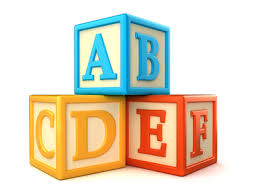Runners who are attempting to remain healthy and run more efficiently are instructed to follow schedules, run at a variety of paces on different surfaces, and take time to recover from intense workouts. Runners who follow these instructions, and carefully make adjustments in the frequency, duration, and intensity of their training programs do seem to be more successful in achieving their goals, but even within this group injuries are not uncommon, and there is an even higher incidence of running-related injuries in the general population of runners. How can this be? Perhaps it’s time to revisit some of the ‘facts’ about running that have become popular over the last four decades. Perhaps it’s time to look at what is based on evidence.
Here is what is supported by the newest research:
- Although running is a natural mode of locomotion, it takes practice, discipline, and time to run with good technique.
- Runners with good technique, as determined by a biomechanical analysis, suffer fewer injuries and are more efficient than runners with poor technique.
- The most successful runners in the world, that is to say, the fastest and most efficient runners, run with essentially the same technique.
- Humans evolved to run barefoot, but some surface conditions or the environment can make running barefoot uncomfortable or dangerous.
- All shoes change the way the foot works; but minimal shoes, those that simply protect the sole of the foot from direct contact with the surface, have the least negative effect on the way the foot reacts and moves naturally.
- Despite all the technological innovations and sophisticated marketing campaigns, the incidence of running related injuries remains high because traditional running shoes actually prevent the development of safe and efficient running technique.
- There is no scientific evidence that wearing significantly cushioned shoes reduces the shock of impact.
- Medially supportive shoes that are designed to control pronation are not only unnecessary, but harmful, because they prevent the development of the muscles of the foot and lower leg , which are necessary to the control natural pronation.
- It is important for the sole of the foot to receive as much information from the running surface as possible; in this way the body can attenuate shock efficiently and adapt to changing surfaces; thicker-soled shoes, even those that are zero drop or relatively flat, reduce sensation.
- The raised heel in most running shoes alters natural gait by changing the position and placement of the foot when it is in contact with the ground.
- The shape of most running shoes does not match the shape of the foot; as a result, the foot cannot work naturally, and muscle imbalances and structural changes occur.
- Shoes with limited flexibility do not allow the foot to move without restriction, and prevent the development of the intrinsic muscles of the foot.
Running is a high level athletic activity that requires significant time and energy to do well. In order to reduce the rate of running-related injuries and run efficiently it is essential to develop good technique, which is based on universal patterns of movement, although there will always be slight individual differences. Fortunately the instructions for learning good running technique are not a closely guarded secret. Unfortunately attempts to educate the running public have not been assisted by the large running companies, or most coaches; in fact, the advice of both groups is often contradicted by the evidence, especially the performance of the world’s best runners!
So how do we learn how to run safely and efficiently? We return to the basics, which are simple to follow and should always be our focus.


I feel like this article should end with maybe a link? or something to advise what the basics are and how to get back to them? Or maybe an indication that this is the first article in a series?
We will be posting many articles in the future. Check out these Dr. Cucuzzella’s “The Principles of Natural Running” (NRC website) and “Good Form Running” on their website. An excellent blog post is “How to Run with Proper Biomechanics” on Seve Magness’s Science of Running website.